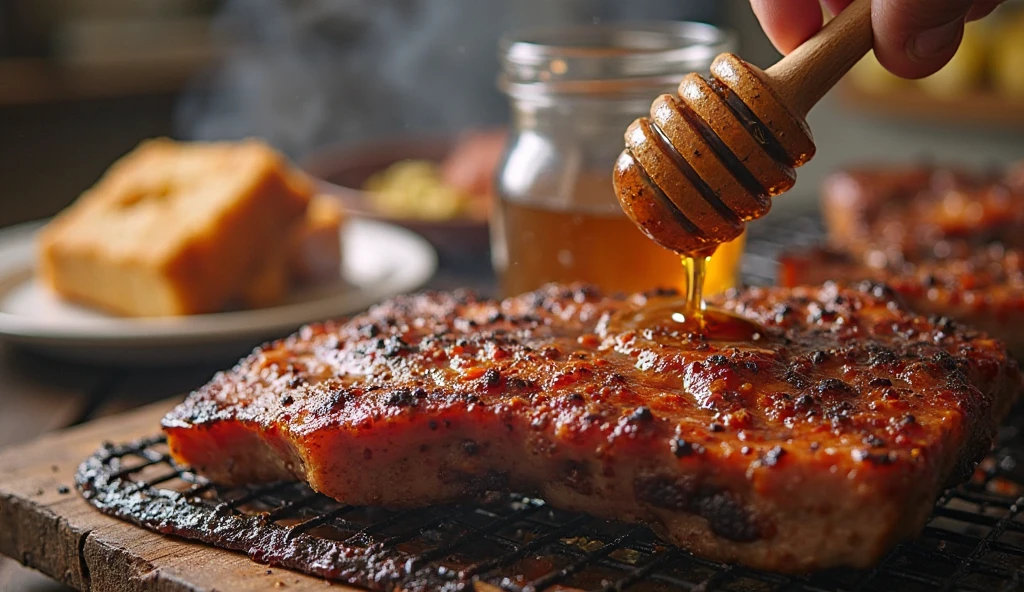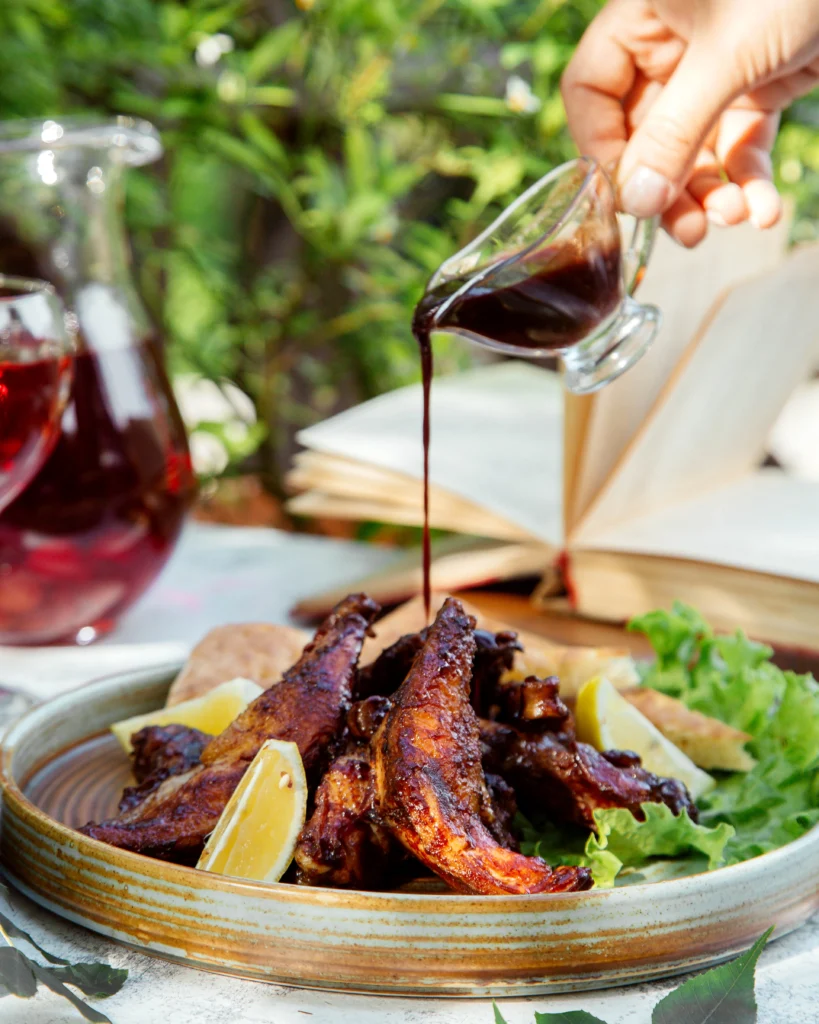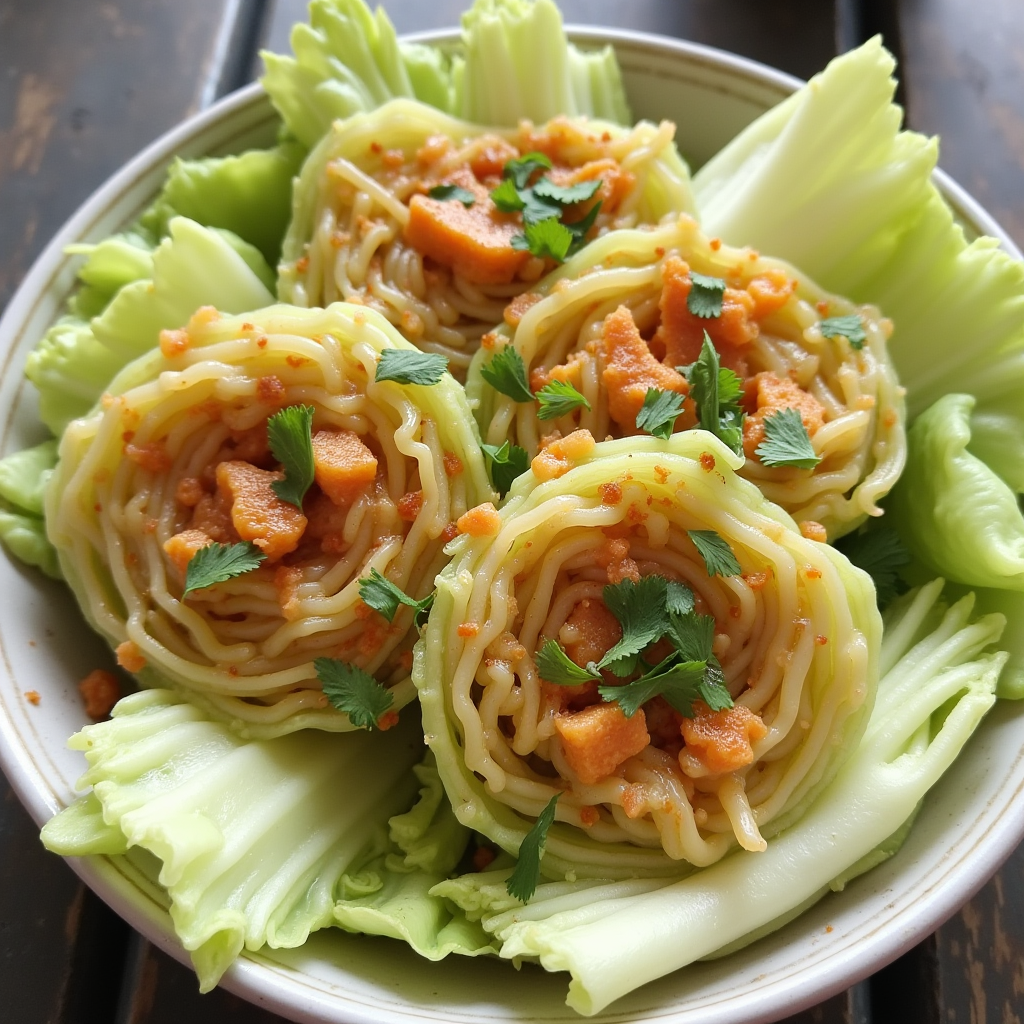
The gentle sizzle of meat on the grill, laughter floating through the backyard, and that unmistakable sweet-smoky aroma wafting through the air—few things capture summer’s essence like a family barbecue. Yet, what transforms those precious moments from memorable to magical often comes down to one crucial element: the sauce. I’ll never forget watching my grandfather lovingly baste chicken with his secret honey barbecue concoction, the caramelization creating a glossy finish that promised flavor in every bite. That transformative power of homemade sauce inspired this recipe—crafted to elevate your everyday grilling to extraordinary culinary experiences that build lasting memories.
Why Make Your Own Honey Barbecue Sauce?
Store shelves might overflow with bottled options, but crafting your own honey barbecue sauce opens doors to flavor dimensions that mass-produced varieties simply cannot match. The difference becomes immediately apparent with that first taste—vibrant, complex, and unapologetically fresh.
Creating barbecue sauce from scratch puts you in complete control of your flavor destiny. Perhaps you prefer a touch more smokiness, an extra kick of heat, or a deeper honey profile. Whatever your preference, homemade preparation allows personalized adjustments impossible with commercial options.
Beyond flavor, homemade sauces eliminate the preservatives, high-fructose corn syrup, and artificial ingredients commonly found in store-bought alternatives. Your sauce features recognizable, wholesome ingredients you’ve handpicked yourself.
The tradition of honey-sweetened barbecue sauces runs deep in American culinary history. Particularly prominent in Southern cooking traditions, honey provided a natural sweetener long before refined sugar became widely available. This honey barbecue sauce recipe honors those roots while incorporating contemporary flavor elements that complement modern palates.
Table of Contents
Essential Ingredients for the Perfect Honey Barbecue Sauce
Quality ingredients form the foundation of exceptional barbecue sauce. Each component serves a specific purpose in creating the balanced flavor profile that makes this recipe shine.
| Ingredient | Amount | Notes |
|---|---|---|
| Raw honey | 1/2 cup | Local varieties offer distinctive flavor profiles |
| Tomato ketchup | 1 cup | Provides tomato base and initial sweetness |
| Apple cider vinegar | 1/4 cup | Delivers essential tang and preservative qualities |
| Worcestershire sauce | 2 tablespoons | Adds depth and umami undertones |
| Brown sugar | 1/4 cup | Creates caramelization and rounded sweetness |
| Smoked paprika | 1 tablespoon | Contributes smokiness without liquid smoke |
| Garlic powder | 1 teaspoon | Offers savory background notes |
| Onion powder | 1 teaspoon | Provides aromatic sweetness |
| Black pepper | 1/2 teaspoon | Adds subtle heat dimension |
| Mustard powder | 1 teaspoon | Creates complexity and slight pungency |
| Salt | 1/2 teaspoon | Enhances all flavors |
| Cayenne pepper | 1/4 teaspoon | Delivers gentle heat (adjustable) |

Kitchen Tools You’ll Need
Preparing this honey barbecue sauce requires minimal equipment, making it accessible for cooks of all experience levels:
- Medium saucepan (preferably heavy-bottomed for even heating)
- Measuring cups and spoons for accurate proportions
- Wooden spoon or silicone spatula for stirring
- Whisk for combining ingredients smoothly
- Funnel for transfer to storage containers
- Glass jars or bottles for storage (mason jars work perfectly)
- Optional: fine-mesh strainer for ultra-smooth texture
Step-by-Step Honey Barbecue Sauce Recipe Instructions
Preparing Your Ingredients
Before heating anything, gather all ingredients measured and ready. This “mise en place” approach ensures smooth preparation without scrambling for components mid-process.
- Measure honey at room temperature for easier pouring
- Have spices organized in small containers for seamless addition
- Ensure workspace allows easy access to all ingredients
Combining and Cooking Your Honey Barbecue Sauce
- Place your saucepan over medium-low heat to begin warming the cooking surface
- Pour ketchup into the warming pan as your base ingredient
- Add honey, stirring continuously as it incorporates into the tomato base
- Introduce apple cider vinegar gradually while whisking to maintain smooth consistency
- Add Worcestershire sauce and continue integrating ingredients
- Sprinkle in brown sugar, stirring until completely dissolved
- Incorporate all remaining dry ingredients (paprika, garlic powder, onion powder, mustard powder, black pepper, salt, and cayenne)
- Stir thoroughly to eliminate any potential spice clumps
- Allow mixture to reach a gentle simmer, then reduce heat to low
- Cook uncovered for 15-20 minutes, stirring occasionally to prevent scorching
- Watch for thickening—proper consistency coats the back of a spoon while still remaining pourable
- Remove from heat once desired thickness develops
- Allow sauce to cool slightly before tasting and adjusting seasonings
Your finished sauce should strike perfect balance between sweet honey notes, tangy vinegar brightness, savory depth, and subtle smoky undertones. The texture should pour easily but cling beautifully to whatever you’re grilling.
Storage and Shelf Life
Proper storage extends the lifespan of your homemade honey barbecue sauce:
- Allow sauce to cool completely before transferring to storage containers
- Pour into sterilized glass jars for best preservation
- Seal tightly and refrigerate immediately
- Keeps fresh approximately 2-3 weeks when properly refrigerated
- Label containers with preparation date for reference
- Freezing portions in ice cube trays creates convenient smaller servings for future use
Customizing Your Honey Barbecue Sauce Recipe
Spicy Variations
For those who appreciate heat with their sweet:
- Double the cayenne pepper for moderate warmth
- Add 1-2 finely minced fresh jalapeños (sautéed before incorporating)
- Introduce chipotle powder for smokier heat dimension
- Incorporate 1 tablespoon sriracha for bright, garlicky spice
- Experiment with ghost pepper honey for serious heat-seekers
Smoky Flavor Enhancements
Deepen the smokiness by exploring these additions:
- Replace standard paprika with Spanish smoked paprika (pimentón)
- Add 1/2 teaspoon liquid smoke (use sparingly as it’s potent)
- Incorporate 1 tablespoon bourbon or whiskey for complex smoke notes
- Try 1 teaspoon mesquite or hickory seasoning
- Use smoked salt instead of regular salt
Regional Honey Barbecue Sauce Variations
Barbecue traditions vary dramatically across regions, each offering distinctive flavor profiles:
Kansas City Style: Increase the brown sugar and add molasses for a thicker, sweeter profile typical of Midwestern barbecue traditions.
Carolina Influenced: Boost the vinegar component and reduce sweetness slightly for tangier results that complement pulled pork perfectly.
Texas Twist: Add more black pepper and a touch of cumin for bolder flavor that stands up to beef brisket.
Memphis Approach: Incorporate more garlic and a hint of allspice for the complex mid-South flavor profile famous in Tennessee.
Perfect Pairings: What to Serve with Your Honey Barbecue Sauce
This versatile honey barbecue sauce elevates numerous dishes beyond standard grilling applications:
Poultry Applications:
- Brush on grilled chicken during the final cooking minutes
- Use as dipping sauce for chicken tenders
- Mix with shredded rotisserie chicken for quick sandwiches
Beef Companions:
- Baste beef ribs during the last hour of smoking
- Serve alongside brisket as complementary condiment
- Incorporate into meatloaf mixture for flavor infusion
Pork Possibilities:
- Glaze ham steaks during final cooking phase
- Toss with pulled pork for classic sandwiches
- Brush onto pork chops before and during grilling
Vegetarian Options:
- Baste grilled tofu or tempeh
- Toss with roasted cauliflower florets
- Use as dipping sauce for sweet potato fries
- Incorporate into jackfruit for plant-based “pulled pork”
Alternative Uses:
- Spread thinly on pizza crust before adding toppings
- Mix with mayonnaise for unique sandwich spread
- Add to baked beans for enhanced flavor profile
- Use as dipping sauce for quesadillas or egg rolls
Nutritional Information and Dietary Considerations
Understanding the nutritional profile helps incorporate this sauce thoughtfully into your meal planning:
| Nutrition Facts | Per Tablespoon |
|---|---|
| Calories | 35 |
| Carbohydrates | 8.5g |
| Sugar | 7.2g |
| Sodium | 95mg |
| Protein | 0.2g |
| Fat | 0.1g |
Dietary Adaptations:
For gluten-free requirements, verify your Worcestershire sauce contains no wheat derivatives or substitute with coconut aminos.
Creating vegan versions requires substituting honey with maple syrup, agave nectar, or date syrup while ensuring your Worcestershire sauce contains no anchovy derivatives.
Reducing sugar content can be achieved by decreasing brown sugar and relying more heavily on spice components for flavor complexity.
Sodium-conscious individuals might reduce salt and Worcestershire sauce quantities while increasing herbs and spices for flavor compensation.


